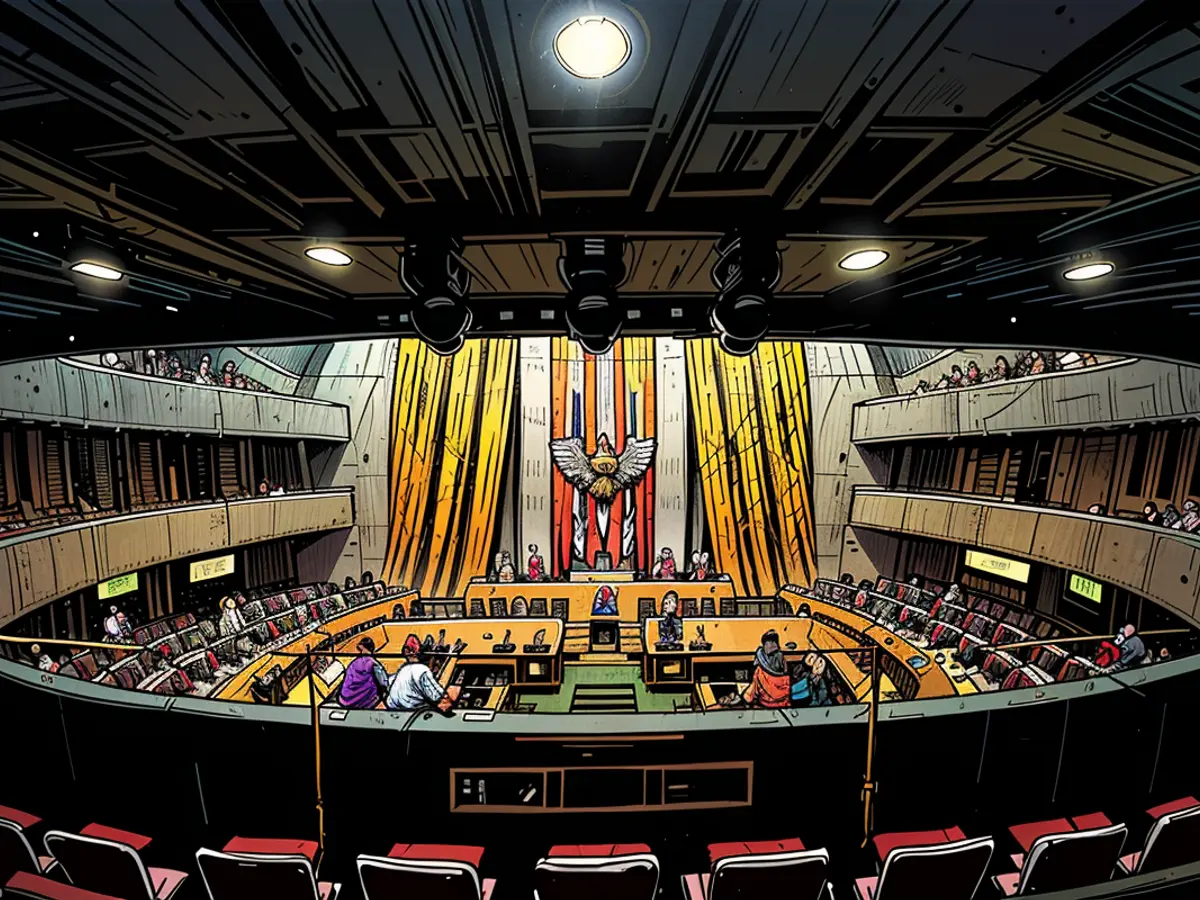Information pertaining to Austria's electoral process and results
Austria is experiencing major political changes: In the National Council elections, the conservative "Austrian People's Party" (ÖVP) has lost its majority in parliament. The right-wing populist "Freedom Party of Austria" (FPÖ) is taking the lead immediately after the polling stations closed.
Initial projections indicate that the FPÖ will garner 29.1 percent of the votes, making it the new most powerful force. The ÖVP is projected to receive 26.2 percent. The Austrian Social Democrats (SPÖ) are in third place with 20.3 percent. The liberal NEOS party is expected to receive 8.8 percent, edging out the Greens (8.6 percent). The BIER party and the KPOE are unlikely to secure parliamentary seats, with 2.1 and 2.3 percent respectively.
Note: The infographics for the 2024 National Council election will be constantly updated on election night.
The political landscape is expected to undergo significant change: Based on current projections, Austria is leaning towards the right. The incumbent coalition of conservatives and greens, led by Chancellor Karl Nehammer, is unlikely to survive the election.
The rightward shift in Austria had already been indicated in the polls prior to the election. The ÖVP and Greens could only count on 56 out of the total 183 seats. With a majority of 92 seats required, a three-party coalition with the Austrian Social Democrats as an additional partner is mathematically possible.
Apart from the right, the Austrian liberals are also seeing gains in the polls. The "NEOS - The New Austria" party could potentially receive between 9 and 11 percent of the votes in the election by the end of September. This would make NEOS, which represents "Freedom, Progress, and Justice" in Austria, the new fourth-strongest political force in the country.
Several smaller parties are expanding the political spectrum: Parties with a chance of entering parliament include the Communist Party of Austria (KPÖ) and the relatively young "Bierpartei" (BPOE). Particularly, the BPOE, which started as a satirical party, could clear the 4 percent hurdle for the first time this time around.
However, the "Liste Madeleine Petrovic" (LMP) has little chance of surpassing the hurdles in the Austrian electoral system. The LMP is an anti-vaccine and environmental protection party that emerged from dissatisfaction with state-imposed measures during the coronavirus pandemic.
The party's leader, Madeleine Petrovic, was a member of the National Council for the Greens from 1990 to 2003. Like the BPOE, the LMP, which was founded in 2022, is participating in a National Council election for the first time on September 29. According to the polls, the "Liste" is likely to secure up to 1 percent of the votes with its leader.
Current events, such as the flood disaster, may influence voting behavior and the election outcome. The exact distribution of seats will be determined by the count on election night.
Rules known as "Sperrklauseln" are applied in a multi-stage process. "For the National Council election, the Austrian federal territory is divided into nine federal electoral districts, which are further subdivided into a total of 39 regional electoral districts," the Ministry of the Interior in Vienna explains.
To be considered for seat allocation, parties must either exceed a certain percentage threshold in at least one of the 39 regional electoral districts in the first stage of the count or achieve more than 4 percent of the total votes cast nationwide in the second stage. The local threshold for the basic mandate is generally between 20 and 25 percent of the local votes.
All 183 seats in the parliamentary chamber are reallocated every five years at the regular National Council election. In principle, all Austrian citizens aged 16 and above are eligible to vote.
The electoral authority at the Ministry of the Interior provisionally stated that there were 6,346,029 eligible voters. This number is around 51,000 people lower than at the previous election in 2019.
Reflecting on Austria Five Years Ago
Approximately 9.2 million people live in the Republic of Austria. The most populous regions are located in the north and east of the alpine republic. Vienna, the capital, has around two million inhabitants. The neighboring federal state of Lower Austria has about 1.7 million inhabitants. Further west, Upper Austria has 1.5 million inhabitants, and Styria in the southeast has a population of just under 1.3 million. The remaining five Austrian federal states of Tyrol, Salzburg, Carinthia, Vorarlberg, and Burgenland together have 2.6 million inhabitants, which corresponds to a population share of 28.7 percent.
The right-wing populist "Freedom Party of Austria" (FPÖ) is projected to become the new most powerful force in the Elections to the National Council in Austria, with 29.1% of the votes. The incumbent coalition, led by Chancellor Karl Nehammer, is unlikely to survive the election as Austria leans towards the right, based on current projections.








